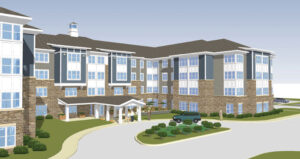Senior housing investors are looking at the active adult sector with increasing interest, a trend that could disrupt the industry’s established norms if it continues.
That’s according to commercial real estate services firm CBRE (NYSE: CBG), which on Thursday released its Summer 2019 Seniors Housing & Care Investor Survey. The latest report includes input from 107 different senior housing investors, developers, lenders and brokers and sheds light on market sentiment in the coming months.
Both independent living and assisted living garnered the most interest from investors, with 28% of them identifying the property types as the biggest opportunity for investment. That’s a decline for independent living, which was identified as the top opportunity by 34% of respondents this time last year.
Meanwhile, 22% of investors flagging the product type as the biggest opportunity. That’s up from 19% this time last year.
That trend may have something to do with owners and operators trying to attract a younger cohort of older adults, according to Jeanette Rice, Americas head of multifamily research at CBRE.
“The emerging active adult sector, sometimes referred to as ‘independent light,’ gives younger seniors another choice,” Rice told Senior Housing News. “Therefore, active adult is taking some independent living demand.”
Another aspect of this shift: some active adult communities are developed with the idea that residents will one day move into higher-acuity communities, Rice explained. Some providers are already embracing this concept, such as Garden City, New York-based Engel Burman Group, which combines age-restricted residential housing with assisted living.
Interest in senior housing should remain strong in the year ahead, with 62% of the surveyed investors looking to grow their portfolios over the next 12 months. That’s relatively unchanged from last year when 64% of senior housing investors said the same thing.
On their worry list, investors identified property-level operating and development costs (44%) oversupply (22%) and rising interest rates (12%) as top concerns.
By Tim Regan





